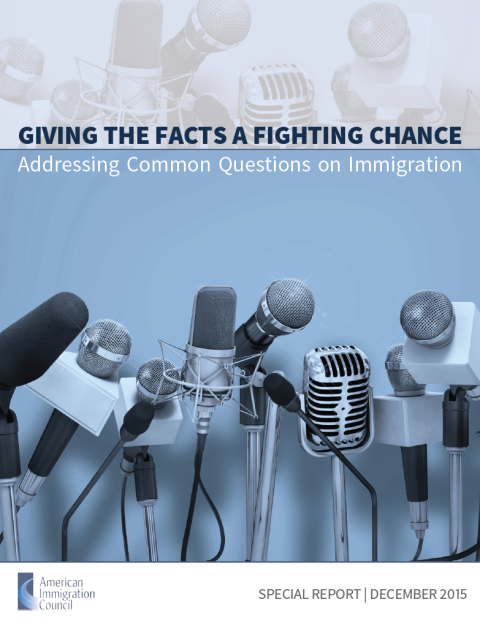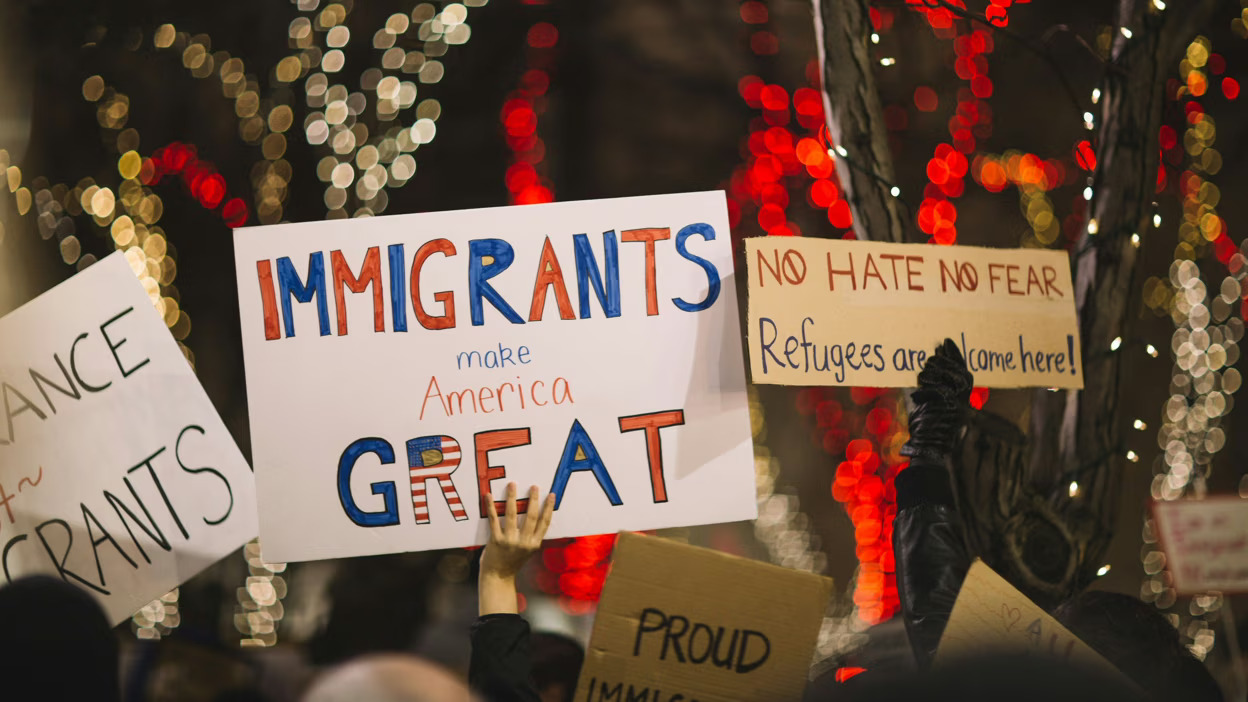Research and Analysis

The H-1B Visa Program and Its Impact on the U.S. Economy
This fact sheet provides an overview of the H-1B visa category and petition process, addresses the myths perpetuated about the H-1B visa category, and highlights the key contributions H-1B workers make to the U.S. economy. Read More

The EB-5 Visa Program: What It Is and How It Works
The Immigrant Investor Program, also known as “EB-5,” has become an increasingly important source of investment for development projects in the United States, attracting billions of dollars to the U.S. economy and creating tens of thousands of jobs in the United States. Read More

The Global Battle for Talent and People
America’s strength lies in its openness and dynamic character. Current concerns about the U.S. economy should not distract from an understanding that in the long term America’s economic success requires the nation to attract 1) skilled professionals from across the globe to increase the competitiveness of American companies and 2) workers at the lower end of the skill spectrum to fuel the growth of the U.S. labor force, filling jobs created by the aging of the population. Read More

Giving the Facts a Fighting Chance: Addressing Common Questions on Immigration
Americans pride themselves on belonging to a nation of immigrants. In fact, many Americans celebrate not only the traditions of the United States, but the traditions of the countries from which their families came. Today, immigrants make enormous contributions to our economy and our communities—just as they always have. Yet… Read More

Health Worker Shortages & the Potential of Immigration Policy
Foreign-born and foreign-trained professionals play an important role in the delivery of health care in the United States. This report examines the important role of immigrant doctors and nurses – many of whom have received their training abroad – in the U.S. health industry, using new Census Bureau data as well as information from numerous interviews with health industry experts. Read More

Fueling the Recovery
How High-Skilled Immigrants Create Jobs and Help Build the U.S. Economy With the U.S. economy still recovering, it may seem counterintuitive to believe that any industry would benefit from having more workers. But that is precisely the case when it comes to those industries which depend upon highly skilled workers. The United States has long faced a dilemma in this respect: the U.S. economy is, in general, absorbing more high-skilled professionals than the U.S. educational system produces or that are available in our workforce. That is one reason so many highly skilled workers in the United States are immigrants. For instance, in “STEM” occupations (science, technology, engineering, and mathematics), the foreign-born account for 26.1 percent of workers with PhDs and 17.7 percent of those with master’s degrees. However, arbitrary limits imposed by the U.S. immigration system, particularly the inadequate supply of green cards and H-1B visas, have restricted the ability of the U.S. to compete in the global battle for talent and ideas. Given that highly skilled professionals tend to create jobs through their innovative work, such limits are economically self-defeating. High-skilled immigrant workers create new jobs. Read More

Rebuilding Local Economies
Innovation, Skilled Immigration, and H-1B Visas in U.S. Metropolitan Areas Although immigration policy is debated at the national level, its impact is most often felt in local and regional communities. This is certainly true for the H-1B program, which is routinely studied at the national level, but cannot be fully understood without driving down to examine the role of H-1B workers at the metropolitan and local levels. New research at this more specific level of analysis suggests that current H-1B policies must be made both flexible and nuanced. There is no “one size fits all” approach to the recruitment, hiring, and retention of high-skilled foreign workers. As lawmakers consider changes to the H-1B program, including the creation of a High Skilled Jobs Demand Index, it is essential to remember that demand for H-1B workers in many metropolitan areas is high, varies by industry, and has ripple effects throughout a regional economy. Thus, predicting and calculating the need for H-1B workers requires an understanding of the dynamics at the metropolitan level. Metropolitan Area Demand for High-Skilled Workers is High, Especially in Innovation Industries Innovation-intensive metropolitan areas tend to have higher rates of patenting, lower unemployment rates, and higher demand for high-skilled workers since patenting growth is correlated with job growth, population growth, and increases in educational attainment. Read More

A Bipartisan Bridge to Prosperity: High-Skilled Immigration Legislation in the 113th Congress
In the spirit of bipartisan immigration reform, a geographically diverse contingent from both chambers of Congress have introduced legislation to strengthen high-skilled immigration and spur economic growth by recruiting and retaining entrepreneurial talent. Research is clear that high-skilled immigrants and immigrant entrepreneurs are a source of strength for America’s economy and innovative competitiveness. Currently, the most common routes for high-skilled immigrants and immigrant entrepreneurs to come to the U.S. include: H-1B visas for “specialty occupations” (which most commonly refers to occupations requiring “the theoretical and practical application of a body of highly specialized knowledge and a bachelor’s or higher degree”), L-1 visas for “intracompany transferees,” O-1A visas for individuals with “sustained national or international acclaim” in the sciences, arts, education, business, or athletics, and E-2 visas for treaty investors, which are available to citizens of countries with treaties of commerce and navigation with the U.S. The three new pieces of legislation include the Immigration Innovation Act of 2013, the StartUp Visa Act of 2013, and the Startup Act 3.0. Immigration Innovation Act of 2013 Read More

Always in Demand: The Economic Contributions of Immigrant Scientists and Engineers
With the U.S. economy in the midst of a prolonged slump, it’s hard to believe that any industry would actually benefit from having more workers. But that is precisely the case when it comes to those industries which depend upon highly skilled scientists and engineers. The United States has long faced a dilemma in this respect: the U.S. economy is capable of absorbing more high-tech professionals than the U.S. educational system produces. That is one reason so many U.S. scientists and engineers are immigrants. In “STEM” occupations (science, technology, engineering, and mathematics), the foreign-born account for 26.1 percent of workers with PhDs and 17.7 percent of those with master’s degrees. Even more U.S. scientists and engineers would be immigrants if not for the arbitrary limits imposed by the U.S. immigration system, particularly the inadequate supply of green cards and H-1B visas. Given that STEM professionals tend to create jobs through their innovative work, such limits are economically self-defeating. Immigrant scientists and engineers create new jobs. Read More

The U.S. Economy Still Needs Highly Skilled Foreign Workers
It might seem that persistently high unemployment rates over the past few years have rendered moot the debate over whether or not the United States really “needs” the highly skilled foreign workers who come here on H-1B temporary visas. But the demand for H-1B workers still far outstrips the current cap of only 65,000 new H-1B visas that can be issued each year. In fact, from fiscal year 1997 to 2011, employers exhausted this quota before the fiscal year was over (except from 2001 to 2003, when the ceiling was temporarily increased). As a number of studies make clear, the presence in a company of highly skilled foreign workers whose abilities and talents complement those of native-born workers actually creates new employment opportunities for American workers. Yet the arbitrary numerical limits placed on H-1Bs are incapable of responding to the changing demand for H-1B workers. This is unfortunate, given that the international competitiveness of the U.S. economy will continue to depend heavily on the contributions of H-1B professionals and other high-skilled workers from abroad for many decades to come. Read More
Make a contribution
Make a direct impact on the lives of immigrants.
